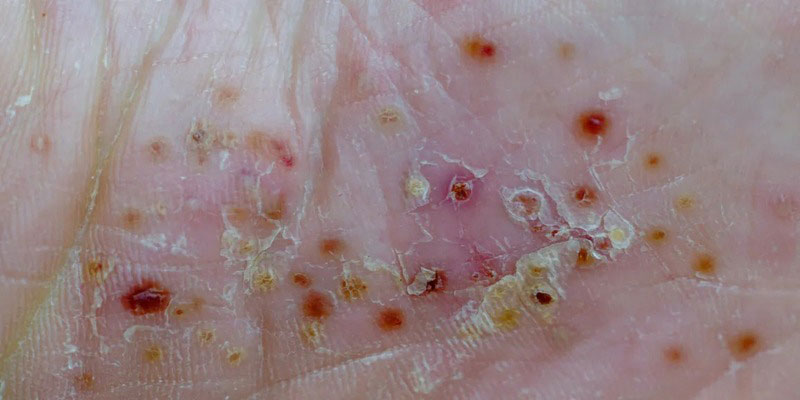Crucial Insights on Lead Poisoning: Causes, Solutions, and Prevention
Feb 08, 2024 By Nancy Miller
Lead poisoning is a serious health concern that often goes unnoticed until symptoms become apparent. In this article, we'll delve into what lead poisoning is, explore its signs and symptoms, discuss its causes, and touch upon the available treatments. Let's break down this important health issue simply and straightforwardly.
What Is Lead Poisoning?
Lead poisoning occurs when lead, a toxic metal, builds up in the body over time. It can affect people of all ages, but children are particularly vulnerable as their developing bodies absorb lead more easily than adults. The sources of lead exposure vary, and it's crucial to be aware of potential risks.
Signs and Symptoms
Lead poisoning symptoms can be subtle and easily mistaken for other common ailments. Identifying these signs early is crucial for prompt intervention and treatment. Let's explore the specific signs and symptoms associated with lead poisoning:
Abdominal Pain: Lead poisoning can cause abdominal discomfort and pain. This symptom is often nonspecific and can be attributed to various digestive issues. If persistent, especially in combination with other symptoms, it warrants attention.
Headaches: Chronic headaches are a common manifestation of lead poisoning. These headaches may range from mild to severe and can be accompanied by general feelings of discomfort.
Irritability: Lead exposure may lead to changes in mood, with irritability being a prominent symptom. This is particularly noticeable in children; sudden mood swings may indicate a potential issue.
Fatigue: Persistent fatigue and weakness can result from lead poisoning. Individuals may feel unusually tired even after adequate rest, affecting daily activities and overall well-being.
Developmental Delays (in Children): Children with lead poisoning may experience developmental delays. This can include delays in speech, learning, and motor skills. Monitoring a child's developmental milestones is crucial for early detection.
Learning Difficulties (in Children): Lead exposure in children may contribute to learning difficulties and behavioral problems. Attention issues, poor academic performance, and difficulty concentrating could be signs of lead poisoning.
Loss of Appetite: Exposure to lead can reduce appetite, leading to subsequent weight loss. This can be concerning, especially if accompanied by other symptoms, and should be addressed with medical attention.
Causes of Lead Poisoning
Lead poisoning can result from exposure to various sources, and understanding these causes is essential for prevention. Here's a detailed explanation:
Lead-Based Paint
Lead-based paint, commonly used before 1978, remains a significant source of lead exposure. Deteriorating paint on surfaces, especially in older homes, can create lead dust or chips. Children are at a higher risk of ingestion when they come into contact with these contaminated surfaces and then touch their mouths.
Contaminated Water
Lead can seep into drinking water when plumbing pipes or fixtures contain lead, a common occurrence in older homes with lead pipes or solder. The risk escalates in areas with high water acidity or low mineral content as lead dissolves more readily. Infants consuming formula prepared with lead-contaminated water face an increased vulnerability.
Occupational Exposure
Certain occupations, such as construction, plumbing, and painting, may involve contact with lead. Workers in these industries can be exposed to lead dust or fumes, putting them at risk of lead poisoning. Using protective gear and following safety protocols is crucial to mitigate this occupational hazard.
Imported Goods
Imported goods, including cosmetics, toys, and ceramics, can contain lead. Inconsistent regulations in different countries may result in products with higher lead levels entering the market. Being cautious about the origin of goods, especially those intended for children, helps minimize exposure.
Soil Contamination
Lead particles from various sources, such as lead-based paint or industrial activities, can settle in the soil. Children playing outdoors may inadvertently ingest lead-contaminated soil. Urban areas with a history of industrial activities are prone to soil contamination.

Treatment and Prevention of Lead Poisoning
Addressing lead poisoning involves a combination of treatment strategies and proactive prevention measures. Let's explore each aspect in detail.
Treatment
Lead poisoning necessitates timely and appropriate intervention. Here's how it's approached:
Identification and Elimination of the Source
Identifying and removing the source of lead exposure is paramount. This involves assessing homes for lead-based paint, addressing contaminated water sources, or mitigating occupational hazards. Once identified, measures are taken to eliminate or reduce exposure.
Chelation Therapy
For moderate to severe lead poisoning, healthcare professionals may recommend chelation therapy. Chelation agents like dimercaptosuccinic acid (DMSA) or calcium disodium edetate are administered. These agents bind to lead in the bloodstream, forming compounds that the body can eliminate through urine. It is essential to emphasize that the administration of chelation therapy should exclusively occur under the supervision of a qualified healthcare professional.
Symptomatic Treatment
Addressing specific symptoms and complications is integral to lead poisoning treatment. Medications may be prescribed to manage pain, nausea, or other symptoms. In severe cases, additional medical interventions may be necessary to address complications affecting different organs, such as the kidneys or the nervous system.
Regular Monitoring
After initiating treatment, regular monitoring is essential to assess progress and ensure that lead levels are decreasing. Follow-up blood tests help track improvements and guide further interventions if necessary.
Prevention
Preventing lead poisoning is crucial, and it involves adopting proactive measures:
Home Environment Safety: Ensuring a safe home environment is vital. Regularly inspect and address peeling or deteriorating paint, especially in older homes. Properly maintaining living spaces can minimize the risk of lead exposure.
Safe Drinking Water: Test and address lead levels in drinking water. Use cold water for cooking and drinking, as hot water is more likely to contain higher lead concentrations. Consider installing water filters that are certified to remove lead.
Occupational Safety: Follow safety protocols if you work in industries with potential lead exposure. Use protective gear and adhere to workplace guidelines to minimize the risk of lead poisoning.
Nutritious Diet: Ensure a balanced diet rich in iron, calcium, and vitamin C. These nutrients can help reduce the absorption of lead in the body.
Regular Health Check-ups: Schedule regular health check-ups, especially for children, to monitor lead levels and detect any issues early on. Regular check-ups contribute to timely interventions and a healthier outcome.

Conclusion
Lead poisoning is a serious health issue that requires attention and awareness. Comprehending the origins, indicators, and preventive measures is crucial for safeguarding oneself and one's close associates. If you suspect lead exposure, don't hesitate to consult with a healthcare professional for guidance. By taking proactive steps and staying informed, we can collectively work towards minimizing the impact of lead poisoning on our communities.
On this page
What Is Lead Poisoning? Signs and Symptoms Causes of Lead Poisoning Lead-Based Paint Contaminated Water Occupational Exposure Imported Goods Soil Contamination Treatment and Prevention of Lead Poisoning Treatment Identification and Elimination of the Source Chelation Therapy Symptomatic Treatment Regular Monitoring Prevention Conclusion
Understanding Fat Storage and Energy Conversion in the Human Body

Group Workouts: Why They Yield Better Health Returns

Folic Acid: A Complete Guide

Reason Improving Sleep Can Prevent Migraine Attacks

Forehead Pimples? 5 Reasons Why They Keep Appearing

Cultivating Better Sleep: 10 Healthy Habits

Navigating the Ideal Nutrition: Best Diet Choices for Gout Sufferers

How Does Pustular Psoriasis Appear

Pregnancy and Immunity: Are You at Risk?

HIIT Unveiled: The Truth Behind 7 Common Misconceptions

A Comparative Guide: Choosing Between Olive Oil and Coconut Oil in the Kitchen
